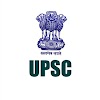📌DEMAND FOR A CONSTITUENT ASSEMBLY
🔸It was in 1934 that the idea of a Constituent Assembly for India was put forward for the first time by M.N. Roy, a pioneer of communist movement in India.
🔸In 1935, the Indian National Congress (INC), for the first time, officially demanded a Constituent Assembly to frame the Constitution of India.
🔸️In 1938, Jawaharlal Nehru,on behalf the INC declared that ‘the Constitution of free India must be framed, without outside interference, by a Constituent Assembly elected on the basis of adult franchise’.
🔸The demand was finally accepted in principle by the British Government in what is known as the ‘August Offer’ of 1940.
📌COMPOSITION OF THE CONSTITUENT ASSEMBLY
The Constituent Assembly was cons -tituted in November 1946 under the scheme formulated by the Cabinet Mission Plan.
The features of the scheme were:
🔸The total strength of the Constituent Assembly was to be 389. Of these, 296 seats were to be allotted to British India and 93 seats to the princely states.Out of 296 seats allotted to the British India,292 members were to be drawn from the 11 governors’ provinces 2 and four from the four Chief Commissioners’ provinces one from each.
🔸 Each province and princely state (or group of states in case of small states) were tobe allotted seats in proportion to their respective population. Roughly, one seat was to be allotted for every million population.
🔸Seats allocated to each British province were to be divided among the three principal communities–Muslims, Sikhs and General (all except Muslims and Sikhs), in proportion to their pop -ulation.
📌WORKING OF THE CONSTITUENT ASSEMBLY
🔸The Constituent Assembly held its first meeting on December 9, 1946. The Muslim League boycotted the meeting and insisted on a separate state of Pakistan.The meeting was,thus attended by only 211 members.
🔸Dr. Sachchidananda Sinha, the oldest
member, was elected as thetemporary President of the Assembly, following the French practice.
🔸Later, Dr. Rajendra Prasad was elected as the President of the Assembly. Similarly, both H.C. Mukherjee and V.T. Krishnamachari were elected as the Vice-Presidents of the Assembly.In other words, the Assembly had two Vice-Presidents.
📌OBJECTIVE RESOLUTION
On December 13, 1946,Jawaharlal Nehru moved the historic‘Objectives Resolution’ in the Assembly. It laid down fundamentals andphilosophy of the constitutional structure. It read:
🔸 “This Constituent Assembly declares its firm and solemn resolve to proclaim India as an Independent Sovereign Republic and to draw up for her future governance a Constitution:
🔸Wherein the territories that now comprise British India, the territories that now form the Indian States and such other parts of India as are outside India and the States as well as other territories as are willing to be constitut -ed into the independent sovereign India, shall be a Union of them all .
🔸Wherein all power and authority of the sovereign independent India, its constitu -ent parts and organs of Government are derived from the people;
📌CHANGES BY THE INDEPENDENT ACT
On April 28, 1947, representatives of the six states were part of the Assembly. After the acceptance of the Mountbatten Plan of June 3, 1947,for the partition of the country, the
representatives of most of the other princely states took their seats in the Assembly.
The Indian Independence Act of 1947 made the following three changes in the position of the Assembly:
🔸 The Assembly was made a fully sovereign body, which could frame any Constitution it pleased. The act empowered the Assembly to abrogate or alter any law made by the British Parliament in relation to India.
🔸The Assembly also became a legislative body. In other words, two separate functions were assigned to the Assembly, that is, making of the Constitution for free India and enacting of ordinary laws for the country.
🔸The Muslim League members (hailing from the areas7 included in the Pakistan) withdrew from the Constituent Assembly for India.
📌COMMITTEES OF THE CONSTITUENT ASSEMBLY
Major Committees
🔸 Union Powers Committee - Jawaharlal Nehru
🔸 Union Constitution Committee -Jawaharlal Nehru
🔸Provincial Constitution Committee -Sardar Patel
🔸 Drafting Committee - Dr. B.R. Ambedkar
🔸 Advisory Committee on Fundamental Rights, Minorities and Tribal and Excluded Areas - Sardar Patel.
This committee had the following five sub- committees :-
(a) Fundamental Rights Sub-Committee - J.B. Kripalani
(b) Minorities Sub-Committee - H.C. Mukherjee
(c) North-East Frontier Tribal Areas and Assam Excluded & Partially Excluded Areas Sub-Committee - Gopinath Bardoloi
(d) Excluded and Partially Excluded Areas (other than those in Assam) Sub-Committee - A.V. Thakkar
(e) North-West Frontier Tribal Areas Sub-Committee.
🔸 Rules of Procedure Committee - Dr. Rajendra Prasad
🔸 States Committee (Committee for Negotiating with States) - Jawaharlal Nehru
🔸 Steering Committee - Dr. Rajendra Prasad
📌MINOR COMMITTEE
🔸Finance and Staff Committee - Dr. Rajendra Prasad
🔸 Credentials Committee - Alladi Krishnaswami Ayyar
🔸House Committee - B. Pattabhi Sitaramayya
🔸Order of Business Committee - Dr. K.M. Munshi
🔸 Ad-hoc Committee on the National Flag - Dr. Rajendra Prasad
🔸 Committee on the Functions of the Constituent Assembly - G.V. Mavalankar
🔸 Ad-hoc Committee on the Supreme Court - S. Varadachari (Not an Assembly Member)
🔸Committee on Chief Commissioners’ Provinces - B. Pattabhi Sitaramayya
🔸Expert Committee on the Financial Provisions of the Union Constitution -Nalini Ranjan Sarkar (Not an Assembly Member)
🔸 Linguistic Provinces Commission - S.K. Dar (Not an Assembly Member)
🔸 Special Committee to Examine the Draft Constitution - Jawaharlal Nehru
🔸Press Gallery Committee - Usha Nath Sen
🔸Ad-hoc Committee on Citizenship - S. Varadachari (Not an Assembly Member)
📌DRAFTING COMMITTEE
Among all the committees of the Constituent Assembly, the most important committee was the Drafting Committee set up on August 29, 1947.
This consisted of seven members. They were:
🔸Dr. B.R. Ambedkar (Chairman)
🔸 N. Gopalaswamy Ayyangar
🔸Alladi Krishnaswamy Ayyar
🔸 Dr. K.M. Munshi
🔸Syed Mohammad Saadullah
🔸 N. Madhava Rau (He replaced B.L.
Mitter who resigned due to ill-health)
🔸 T.T. Krishnamachari (He replaced D.P. Khaitan who died in 1948)








